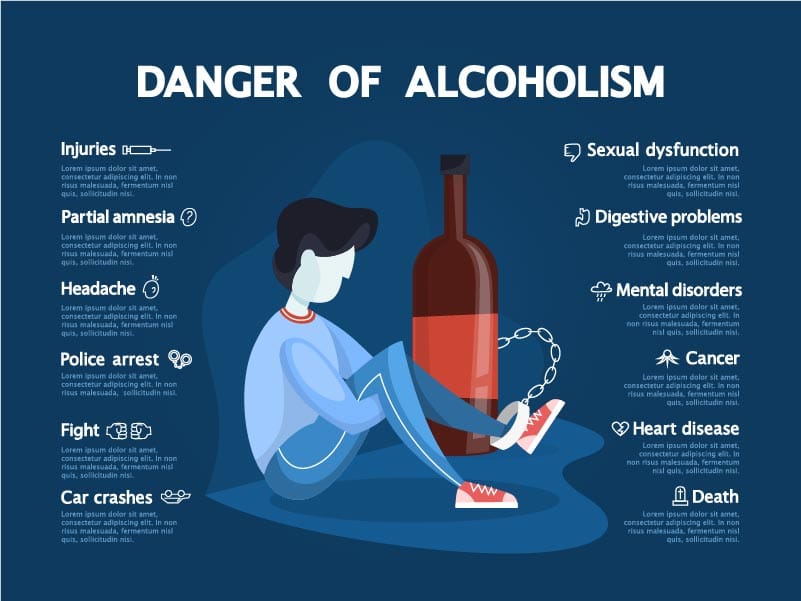We’re all aware of the opioid crisis happening in recent years. The Centers for Disease and Control (CDC), says over 77,000 people died from drug overdoses in 2017. Of those 77,000, 44,800 died from an opioid overdose which more often than not involved fentanyl. This increase is nearly five-fold from the 8,000 opioid-related overdoses in 1999. Learn more about alcohol education by contacting us today.
This rate is extremely alarming and we should continue to examine it closely, but the trend seems to be leveling off. This is most likely due to the increase of awareness and availability of Narcan (a drug used to counteract an opioid overdose).
Meanwhile, alcohol caused an average of 88,000 deaths each year in the U.S. from 2006 to 2010. If alcohol is killing more Americans than opioids, then why isn’t it getting similar attention? Alcohol is the third leading preventable cause of death in the United States behind tobacco and obesity.
Well, much like tobacco, alcohol is in a league of its own when it comes to social acceptability. Tobacco, while legal, still receives largely negative public attention. From the early ’70s, we’ve known about the dangers and negative impacts of tobacco. Alcohol, on the other hand, keeps on its invisible cloak of social acceptability.
Coalition Recovery offers alcohol addiction treatment in Tampa Bay. Learn more by connecting with our center at 888.707.2873 today.
Alcohol in American Society
Watch any sports broadcast and it’s clear how ingrained alcohol is in our culture. For this reason, the act of abstaining from alcohol entirely often seems out of the ordinary. Special occasions like weddings, barbeques, and vacations, often center around drinking.
People don’t really bat an eye because it’s about “letting loose.” People may not look at it as a big deal as long as it’s not something done every day.
What Is Harmful Drinking?
So let’s look at what really constitutes high-risk drinking. Thankfully, National Institute on Alcohol Abuse and Alcoholism (NIAAA), a part of the National Institutes of Health (NIH), created a website entitled Rethinking Drinking to highlight the extent of misperceptions about what constitutes “low-risk” vs. “high-risk” alcohol consumption. According to them, women who drink more than three drinks per day or more than seven drinks per week are considered “high-risk”, while men’s numbers are slightly higher. High-risk means participating in behavioral patterns that have detrimental consequences to both short-term and long-term health.
Alcohol Epidemic Numbers
While news media tends to focus on the opioid epidemic, we are just as much in an epidemic with alcohol. Since the 1990s, social drinking has increased dramatically, accompanied by a correlated rise in alcohol use disorders, especially among minorities and women. In fact, the alcohol-related death rate for women increased 85% from 2007 to 2017. This could be attributed to the idea that a glass of wine is good for the heart, but this may have created a slippery slope.
If alcohol is killing more people per year than opioids, then why aren’t we hearing these stories? The answer lies in the fact that alcohol causes deaths in a variety of ways. Most people are aware of alcohol poisoning, but many don’t realize is that this is the same as an overdose from alcohol.
Many of the 88,000 deaths are not from overdoses but auxiliary effects like cirrhosis of the liver and alcohol-impaired driving. Even though alcohol has a direct tie to these deaths, the words “cirrhosis” or “vehicle accident” disassociate our thoughts from the alcoholic cause.
Alcohol-Related Illnesses
Cirrhosis is the third most common cause of death in people aged 45-65 years. Cirrhosis happens when a damaged liver (caused by excessive alcohol consumption) tries to repair itself over and over and eventually produces scar tissue. While cirrhosis is the most common form of disease related to alcohol, there are a variety of other diseases induced by excessive alcohol.
Pancytopenia
This happens when alcohol suppresses the body’s bone marrow to the point that it wipes out the red and white blood cell counts along with platelet counts. In many cases, a person can have infections, the signs of severe anemia, including fatigue and difficulty breathing, and bleeding. If caught early enough, a person can recover by stopping the use of alcohol.
Cardiovascular symptoms
One of the most common heart defects caused by alcohol is cardiomyopathy. This condition causes ejection fraction (making it hard for the heart to pump blood), increasing the likelihood of congestive heart failure.
Alcohol drinkers, especially women, are at an increased risk of developing high blood pressure and increased risk of stroke.

Cancer
There is a high correlation between liver, mouth, throat, and esophageal cancer with excessive alcohol usage. Alcohol consumption in women can also increase their chance of breast cancer as well.
Dementia
Because alcohol directly affects the brain, it is no surprise that this mind-altering drug can have serious effects on it. Alcohol dementia, at times hard to differentiate between Alzheimer’s, is a real disorder. It is probable that many people struggling with alcohol use disorders and diagnosed with Alzheimer’s may, in fact, present signs of alcohol dementia instead.
Mental Health Disorders
Alcohol is a coping mechanism for a multitude of health concerns including depression, anxiety, trauma, PTSD, schizophrenia, and a variety of others. Not only do these illnesses go untreated, but because of alcohol’s effect on the brain and central nervous system, it can actually induce and/or exacerbate these disorders.
Immune suppression
Alcohol consumption makes you more susceptible to infections. Additionally, alcohol-fueled behavior can increase your risk of contracting sexually transmitted diseases.
Alcohol as a Preventable Death
While alcohol is the direct contributing factor to these illnesses, doctors often overlook this causation. Because alcohol deaths take years to develop and often create subsidiary diseases that mask the true damage of alcohol. However, as more healthcare professionals focus on understanding the signs and symptoms of alcohol use disorders, documentation of the root cause of these illnesses can be more accurate. Therefore, a contributing factor to the rise in alcohol-related deaths could be a shift in more accurate documentation.
Alcohol, being the third-largest preventable death in America, can distort our perceptions a bit. The word “preventable” can allude to varying degrees in how it could be prevented. For others on the list, it is just a change in daily habits. Quit smoking. Better diet. Safer sex. Safer cars. Education and knowledge are necessary requirements to prevent these deaths. “The more people know the importance of wearing a seatbelt, the fewer deaths there will be.”
With alcohol, there is a slightly different story. Individuals with alcohol use disorders are unable to make the decision to stop. Without getting too far into the weeds, people who drink alcohol excessively cannot simply stop. This is why alcohol addiction is a disorder and categorized as such – Alcohol Use Disorder (AUD).
As you can see, compartmentalizing alcohol deaths with vehicle deaths undercuts the difficulty of preventing alcohol-related deaths. That is not to say these deaths cannot be prevented, they can, just in different ways.
Insurance companies have yet to recognize and provide coverage for alcohol use disorders on par with other chronic illnesses. For this reason, even those covered by health insurance struggle to find treatment. A simple shift in health insurance coverage could help prevent many alcohol-related deaths as more people might be able to receive treatment and therefore quit drinking entirely.
Alcohol Vs. Tobacco
While tobacco causes over 400,000 deaths per year, one could make an argument that alcohol creates a larger negative impact on society but tobacco is not related to mental health disorders. Tobacco is not directly related to violent crimes. Cigarettes don’t sabotage people’s families and careers. Cigars are not related to brain damage/dementia.
Tobacco is still one of the deadliest drugs in the United States and should not be seen as anything else, but my point is that it is hard to put a quantifiable number to the myriad of damages done by alcohol.
This is not to say that we should diminish the damage caused by tobacco, but rather to realign our thoughts on how alcohol is impacting American society because comparing numbers alone does not show the full picture.
The Need for Alcohol Addiction Treatment in Tampa Bay
Ultimately, to prevent these ever-rising deaths requires a combination of education, prevention, insurance coverage, and treatment availability. Because of the normalcy of drinking and the overshadowing done from the opioid epidemic, it is easy to lose sight of the fact that consuming more than seven drinks a week will reduce your life expectancy by six months. More than 14 drinks a week shortens your life by two years.
So why do opioids get all of this publicity while alcohol slides under the radar? Because of our social norms regarding alcohol, we have essentially become used to the deadly effects of alcohol. Meanwhile, the opioid epidemic is much more exciting as the trend is recent and new.
Not to say we shouldn’t be looking at opioids, heroin, and fentanyl, but sometimes when something new comes along, we forget to remember some of the dangers in our culture that have been ongoing and will continue to grow without proper awareness and education.
Connect with Coalition Recovery today at 888.707.2873 or reach out online to learn more about our alcohol addiction treatment programs in Tampa Bay.







